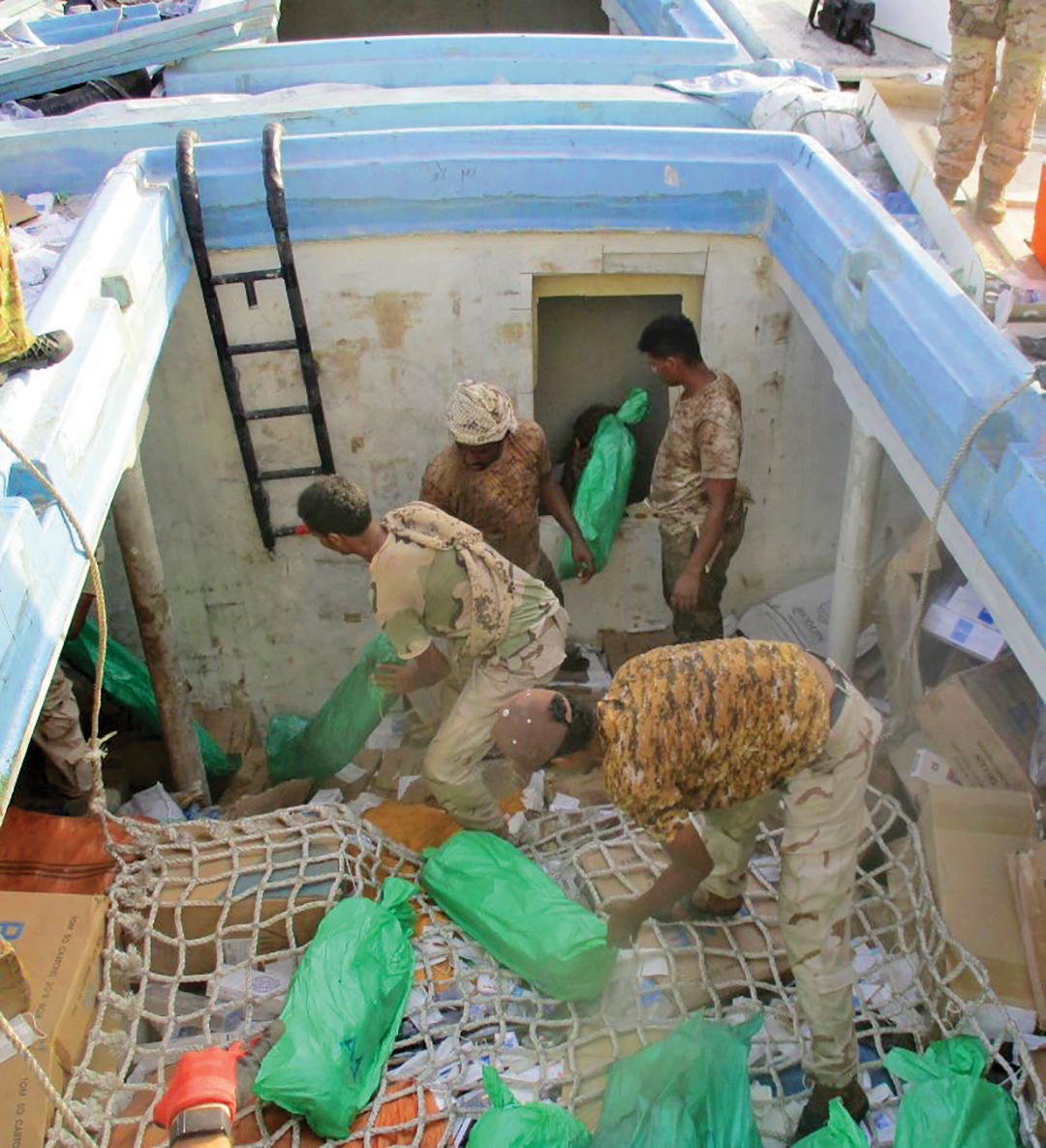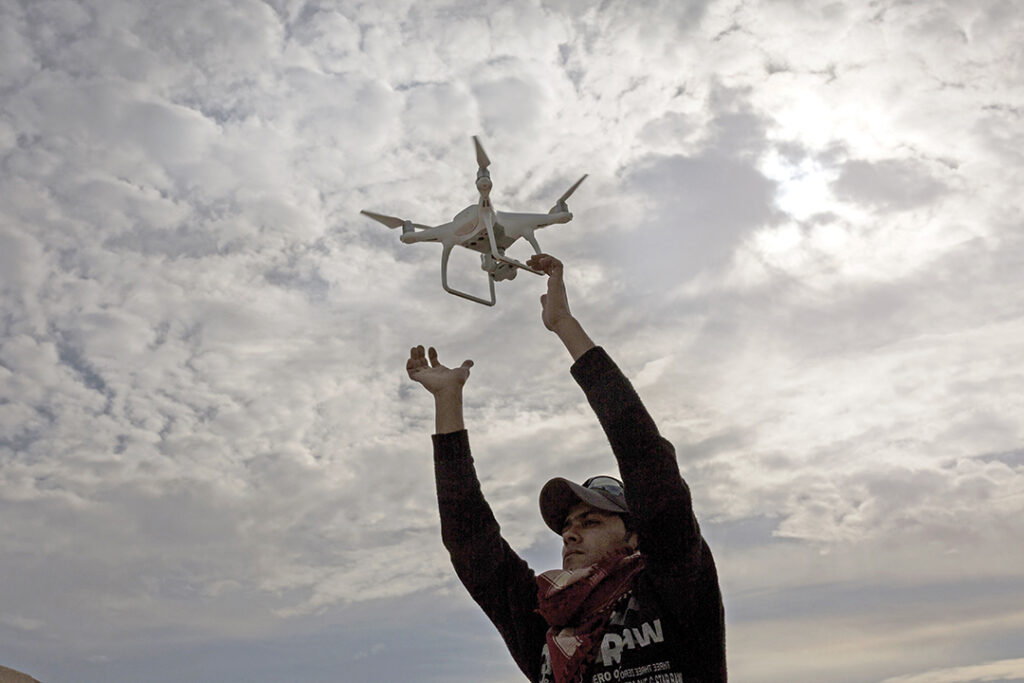The use of drones by malign actors is the latest in a series of evolving security challenges
UNIPATH STAFF
The rise of disruptive technology that alters the nature of the battlefield is a feature of conflicts over the past decade. In the Middle East and South and Central Asia, that technological disruption was visible in the use of smartphones for battlefield communication and global positioning, but also for spreading propaganda and recruiting terrorist fighters. Improvised explosive devices, or IEDs, were another relatively low-cost means by which enemy forces aimed to counter the military superiority of coalition partners in places such as Iraq, Afghanistan and Yemen.
But among the biggest threats today is the proliferation of unmanned aerial devices, or UAVs. These relatively inexpensive pilotless aircraft appear in a variety of guises to act as aerial reconnaissance platforms, bomb delivery systems and, more ominously, offensive missile launchers. Iran has specialized in the development of UAVs that the country has used to export destruction to countries such as Yemen and Saudi Arabia.
The need to counter UAVs — or drones as they’re more popularly called — has become a concern for nations around the world. Daesh deployed UAVs to conduct operations during the liberation of the northern Iraqi city of Mosul, calling on the creativity of coalition partners to develop counter-UAV tactics to thwart the terrorists’ designs. But it’s the Yemeni civil war that has raised the stakes in the use of drones.

Despite shooting down hundreds of UAVs emanating from Houthi-controlled territory in Yemen, Saudi Arabia has suffered damage to oil production centers from hostile pilotless aircraft. The most prominent was the September 2019 aerial attack on the Saudi Aramco petroleum refinery in Abqaiq that temporarily depressed global oil production by 5%. Houthis have launched other armed drones in attempts to assassinate Yemeni leaders and claim to have attacked a commercial airport in Abu Dhabi in the United Arab Emirates.
This expansion in the use of UAVs from military targets to civilian targets has sparked concerns among coalition partners in the region and raised questions about the need to develop and deploy better counter-UAV technology.
“The continuation of the Houthi militia in its hostile, terrorist acts using bomb-laden UAVs to target innocent civilians is a blatant violation of the customary International Humanitarian Law,” Arab Coalition spokesman Col. Turki Al-Maliki of Saudi Arabia said after an attempted attack in the Asir region in June 2020.
At a hearing before the U.S. Congress in early 2020, Gen. Kenneth McKenzie, commander of U.S. Central Command (CENTCOM), noted that unmanned aerial systems require a response similar to steps taken against IEDs more than 10 years ago. Confronted with makeshift bombs buried along roads, the U.S. and its partners invested in countermeasures such as mine resistant ambush protected vehicles, or MRAPs. Coalition partners must take similar measures to thwart what McKenzie called “airborne IEDs.”
“Enemy UAS [unmanned aerial system] assets have expanded in size, sophistication, range, lethality and numbers and are emplaced and employed throughout USCENTCOM’s Area of Responsibility,” the CENTCOM commander said. “These systems’ low velocity and altitude make them difficult to detect on radar, and limited options exist in effectively defeating them.”
Nevertheless, regional military partners are unifying their efforts to counter the UAV threat. For example, at the multinational Eager Lion exercise in Jordan in 2019, troops practiced tracking, shooting down and dissecting unmanned aerial vehicles of the type used by terrorists. Many of the lessons learned were accumulated in the battles to liberate Iraq from Daesh.

In Mosul, the terrorists sometimes strapped bombs to “quadcopter” drones available to the public for less than $700. Other Daesh drones were used to capture videos that were broadcast over the internet with the aim of rallying fellow terrorists and disheartening coalition troops. At the request of Iraqi military commanders, the U.S. Joint Improvised-Threat Defeat Organization, together with the U.S. Air Force Research Laboratory, investigated how best to defeat Daesh’s aerial threat. “Commercial drones are easily available on the Internet, in most cases controlled by a smartphone connected to remote control, and the digital footage captured by the drone is then later used as propaganda,” Professor Ibrahim Al-Marashi of California State University wrote in an article about the UAV threat in 2019.
Up to now, the United States and its partners have relied on surface-to-air missile batteries, shoulder-launched projectiles, and air-to-air missiles to shoot down hostile drones. Other countermeasures include electronic jamming of UAVs to disable them or knock them off target. Militaries have also explored the possibilities of drone-to-drone combat to shoot threatening UAVs from the sky.
Commanders such as Gen. McKenzie have lobbied for the development of integrated command and control networks to defend against UAVs in the Middle East and beyond. These networks include projectile-based and electronically based countermeasures, what the military calls “hard-kill” and “soft-kill” options.
Another tool is the 2016 Joint Declaration for the Export and Subsequent Use of Armed or Strike-Enabled UAVs. Fifty-four countries signed the agreement, which limits the proliferation of potentially destabilizing military drones, but Iran declined to commit to such restrictions. Experts suggest strengthening the agreement to prevent drones from falling into the hands of terrorists and other nonstate actors. Drone components have been among the materials seized from dhows smuggling weapons into Yemen from Iran in violation of United Nation’s arms embargoes to the country.
The evolution of security threats to the region means militaries can rarely rest when it comes to technological innovation. Cheap, off-the-shelf technology such as smartphones, laptop computers, IEDs and remote-controlled drones can, in the hands of malign actors, change the complexion of the battlefield and speed the development of countermeasures to confront it.

